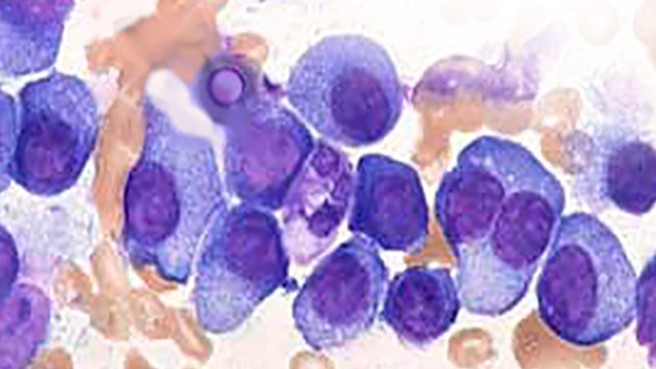
Recently Diagnosed or Relapsed? Stop Looking For a Miracle Cure, and Use Evidence-Based Therapies To Enhance Your Treatment and Prolong Your Remission
Multiple Myeloma an incurable disease, but I have spent the last 25 years in remission using a blend of conventional oncology and evidence-based nutrition, supplementation, and lifestyle therapies from peer-reviewed studies that your oncologist probably hasn't told you about.
Click the orange button to the right to learn more about what you can start doing today.
- You are here:
- Home »
- Blog »
- Multiple Myeloma »
- MRD Testing Cheaper Than Multiple Myeloma Maintenance Therapy!
MRD Testing Cheaper Than Multiple Myeloma Maintenance Therapy!

“This study lends support to the concept of MRD-driven decision-making and helps validate the relevance of MRD,” the researchers concluded.”
Could a blood test to confirm achieving MRD- status, tell you when to stop taking chemotherapy? Does achieving minimal residual disease (negative) status mean that more chemotherapy won’t do you any good, so why do it? To a large extent, the study linked below states the obvious but oncology must confirm concepts such as the cost-benefit of monthly maintenance therapy…
According to the article linked below, MRD- status means several important things to MM patients.
- First, discontinuing maintenance therapy is cheaper then paying for it (!).
- Second, discontinuing maintenance therapy leads to a higher quality-of-life (!).
- Lastly, achieving MRD- status leads, on average, to a longer progression-free survival (!).
I include an exclamation point in parenthasis when I think something I’m writing is obvious. Are you a multiple myeloma patient or survivor? Have you achieved MDR neg. or pos. status? Scroll down the page, ask me a question or post a comment and I will reply to you ASAP
Thank you,
David Emerson
- MM Survivor
- MM Cancer Coach
- Director PeopleBeatingCancer
Recommended Reading:
- “Should I be Tested for Cancer?” Maybe Not and Here’s Why
- Minimal Residual Disease (MRD) in Multiple Myeloma
- MRD Negative Plus MDR Means No ASCT in Myeloma?
MRD Testing Is Valid in the Real World, Can Be Cost-Effective Over Lifetime of Patients With MM
“Testing for minimal residual disease (MRD) is increasingly being used in patients with cancer because deep MRD negativity (MRD–) is associated with better outcomes for patients and MRD status can help make decisions regarding treatment.
An abstract presented at the 2019 American Society of Clinical Oncology Annual Meeting evaluated the cost-effectiveness of MRD testing during maintenance treatment for patients with multiple myeloma (MM).1 The researchers compared yearly next-generation sequencing MRD testing with no MRD testing over a lifetime horizon. They used the assumption that treatment would stop after a patient got an MRD– result.
Based on previous literature, they put the cost of MRD testing at $1800 plus $1836 for specimen collection, the cost of
- maintenance treatment at $21,168 per month, and the
- cost of treatment for relapsed patients at $27,422 per month.
They determined that MRD testing saved $1,156,600 over patients’ remaining lifetime. In addition, health outcomes slightly favored MRD testing over no testing with an increase in quality-adjusted life years (QALYs) of 0.01. The researchers suggested that MRD testing resulted in an improved QALY because there was lower risk of adverse events from continued treatment when it was not needed.
A second abstract evaluated the University of California, San Francisco’s experience assessing MRD in patients receiving frontline therapy and therapy for relapsed MM.2 The researchers studied 181 patients, 126 of whom were newly diagnosed, to assess the predictive power of MRD testing in the real world and how it compared with results seen in clinical trials.
They analyzed a total of 298 MRD samples. Overall, 66 patients (36%) achieved MRD– status on 1 or more samples. Among newly diagnosed patients, 43 (34%) achieved MRD– status at least once, whereas 55 (38%) patients receiving treatment for relapsed MM achieved MRD– status. In both groups of patients achieving MRD– status, progression-free survival was longer versus patients who were persistently MRD+.
Even patients who were MRD+, but at a very low level (between 10-5and 10-6), had a better prognosis than patients with higher disease burdens. Patients with 3 or more MRD– samples and patients with continuously declining detectable clones also had more prolonged progression-free survival compared with patients who had a stable number of clones.
“This study lends support to the concept of MRD-driven decision-making and helps validate the relevance of MRD,” the researchers concluded.
References
1. Carlson JJ, Eckert B, Zimmerman M. Cost-effectiveness of next-generation sequencing minimal residual disease testing during maintenance treatment for multiple myeloma. Presented at: 2019 American Society of Clinical Oncology Annual Meeting; May 31-June 4, 2019; Chicago, Illinois. Abstract E19529.
2. Martinez-Lopez J, Wong SWK, Shah N, et al. Minimal residual disease clinical monitoring and depth of response in multiple myeloma. Presented at: 2019 American Society of Clinical Oncology Annual Meeting; May 31-June 4, 2019; Chicago, Illinois. Abstract 8026.


